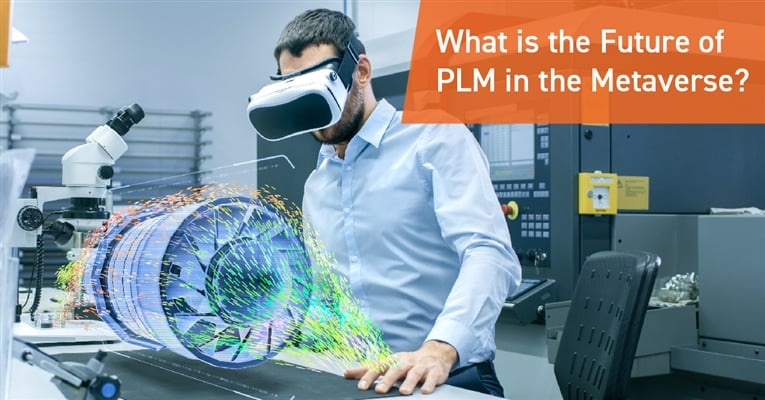The Metaverse is personal, will it become all business?
IDC defines the Metaverse as an evolution of today's internet that leverages mobile devices, augmented and virtual reality headsets, and next-generation networks to create a persistent and continuous user experience with a strong sense of presence. Are we at the level of Ready Player One yet? No, but we are already more than halfway there! If you think about IDC’s definition, all the technology exists today – including the haptic gaming chair that simulates realistic force and tactile feedback, creating a strong virtual sense of presence. As the technology continues to advance, it will only be a matter of time until personal use of the metaverse explodes. With all these technologies and seemingly farfetched concepts the question is - what will its role and VALUE be to industry and your daily work life? Your first product review meeting is about to start in the Metaverse, so strap into your haptic chair and let’s get started!
A little reality check
We need context for this meeting to make sense and the technology to support it. The Metaverse is BIG, and for it to be successful, it will require technologies not typically imagined for the success of a global team. There is significant infrastructure required. But there are many similarities to what is used today. For instance, Microsoft Teams or Google Meet are designed to meet virtually now, but in the Metaverse it will be immersive and through the haptic chair you will feel and experience the same space together. This could improve the human connection that is missing from today’s technology, but this is more than meeting together in a meeting space. It could be at your headquarters, or on Mars – that’s right, Mars. We’ll let the IT teams of the future figure that out.
What better way to use the Metaverse than to meet at the place your complex product will operate, experience the product as the user would, and understand the issues “firsthand” through virtual collaboration. To be successful requires an accurate representation of the complex product about which you are meeting. Conveying and manipulating it is the centerpiece of your meeting. Let’s move on to what is important in creating the context and traceability for an effective Metaverse collaboration and the role product lifecycle management plays.
It won’t work without product data
The meeting topic requires access to product data; the good news is this isn’t any different than meetings today, except that with an outdated PLM solution, you are bringing a spreadsheet to the meeting. (Wow that is fun, you’re on the Mars surface with your team and you display a spreadsheet from your desktop, wanh wanh.)
The good news is, a SaaS-based platform approach to product data implemented today will create the context for your meetings when you enter the Metaverse – whatever the location may be. Everyone will have access to the information, everyone will know what decisions have been made, and who is responsible for next steps. Accessing this data and navigating its path will make your Metaverse meeting more efficient because everyone will have the right data at the right time. A lack of accurate product data will result in poor collaborative discussions. Since seeing is believing, there is no sense of logging in and going to Mars to look at a spreadsheet. The meeting should be immersive.
A digital twin for product context is key
Not only does the meeting space need to be accurate to convey context of where the product will operate, but the complex product you are discussing needs to have accurate context too. This requires managing the virtual product’s configuration and keeping it up to date as things change. There is no point in looking at a configuration three generations behind, you need the latest configuration to create the context for the meeting. This needs to be navigable, not only as a 3D representation, but augmentable so you can access related information to engage in the collaborative discussion. This requires connectivity to information throughout the enterprise including customers, suppliers, and within the organization.
Product data requires connectivity, aka the digital thread
To navigate product data in the Metaverse won’t be much different than it is today, albeit a much more incredible, customizable interface based on a preloaded user profile. The digital thread will be just as important in the Metaverse as it is today. Preparing for that now will set the stage for the flexibility to adapt to a Metaverse future.
By connecting silos of information with context, this digital thread is traceable. While in the Metaverse you can explore information to build a baseline for the next generation product. You can also trace issues in a product from the customer’s point of view to the team or engineer that designed it. This insight enables organizations to move quickly to the resolution of problems and to make adjustments to support customer needs –that is, the digital thread tells a story in the Metaverse.
Conclusion
As fantastic as the Metaverse for business may seem, we have most of the tools available now to help set the stage and prepare for its impending future. This means taking actions now such as:
- Implementing a SaaS based PLM solution that allows for customization to support your evolving needs now, and again when you enter the Metaverse.
- Creating traceability with a digital thread, looking for opportunities that provide the integrations needed to sustain the connection with context across the enterprise ecosystem.
- Maintaining context visually through the digital twin. Look for options that allow you to keep pace with product configuration changes not only during the development of products but once they are manufactured and in service.
Are you heading to the Metaverse? Let us know how by commenting on this blog. We look forward to future conversations with you here, and someday in a collaborative Metaverse, with a view of Mars.

